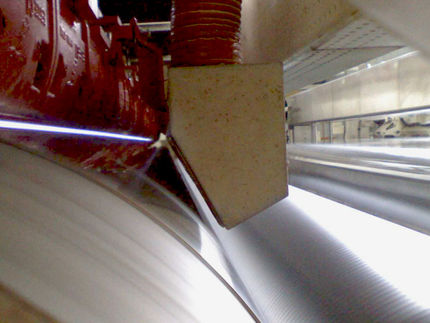Fire-retardant coating featuring renewable materials
Coating could reduce the flammability of polyurethane foam
Texas A&M University researchers are developing a new kind of flame-retardant coating using renewable, nontoxic materials readily found in nature, which could provide even more effective fire protection for several widely used materials.

Furniture, symbolic picture
Alexas_Fotos; pixabay.com; CC0
Dr. Jaime Grunlan, the Linda & Ralph Schmidt '68 Professor in the J. Mike Walker '66 Department of Mechanical Engineering at Texas A&M, led the recently published research.
Successful development and implementation of the coating could provide better fire protection to materials including upholstered furniture, textiles and insulation.
"These coatings offer the opportunity to reduce the flammability of the polyurethane foam used in a variety of furniture throughout most people's homes," Grunlan noted.
The project is a result of an ongoing collaboration between Grunlan and a group of researchers at KTH Royal Institute of Technology in Stockholm, Sweden, led by Lars Wagberg. The group, which specializes in utilizing nanocellulose, provided Grunlan with the ingredients he needed to complement his water-based coating procedure.
In nature, both the cellulose - a component of wood and various sea creatures - and clay - a component in soil and rock formations - act as mechanical reinforcements for the structures in which they are found.
"The uniqueness in this current study lies in the use of two naturally occurring nanomaterials, clay nanoplatelets and cellulose nanofibrils," Grunlan said. "To the best of our knowledge, these ingredients have never been used to make a heat shielding or flame-retardant coating as a multilayer thin film deposited from water."
Among the benefits gained from using this method include the coating's ability to create an excellent oxygen barrier to plastic films - commonly used for food packaging - and better fire protection at a lower cost than other, more toxic ingredients traditionally used flame-retardant treatments.
To test the coatings, Grunlan and his colleagues applied the flexible polyurethane foam - often used in furniture cushions - and exposed it to fire using a butane torch to determine the level of protection the compounds provided.
While uncoated polyurethane foam immediately melts when exposed to flame, the foam treated with the researchers' coating prevented the fire from damaging any further than surface level, leaving the foam underneath undamaged.
"The nanobrick wall structure of the coating reduces the temperature experienced by the underlying foam, which delays combustion," Grunlan said. "This coating also serves to promote insulating char formation and reduces the release of fumes that feed a fire."
With the research completed, Grunlan said the next step for the overall flame-retardant project is to transition the methods into industry for implementation and further development.
Original publication
Original publication
Shuang Qin, Maryam Ghanad Pour, Simone Lazar, Oruç Köklükaya, Joseph Gerringer, Yixuan Song, Lars Wågberg, Jaime C. Grunlan; "Super Gas Barrier and Fire Resistance of Nanoplatelet/Nanofibril Multilayer Thin Films"; Adv. Mater. Interfaces; 2019
Topics
Organizations
Other news from the department science
These products might interest you

OCA 200 by DataPhysics
Using contact angle meter to comprehensively characterise wetting behaviour, solids, and liquids
With its intuitive software and as a modular system, the OCA 200 answers to all customers’ needs

Tailor-made products for specific applications by IPC Process Center
Granulates and pellets - we develop and manufacture the perfect solution for you
Agglomeration of powders, pelletising of powders and fluids, coating with melts and polymers

Dursan by SilcoTek
Innovative coating revolutionizes LC analysis
Stainless steel components with the performance of PEEK - inert, robust and cost-effective

Get the chemical industry in your inbox
By submitting this form you agree that LUMITOS AG will send you the newsletter(s) selected above by email. Your data will not be passed on to third parties. Your data will be stored and processed in accordance with our data protection regulations. LUMITOS may contact you by email for the purpose of advertising or market and opinion surveys. You can revoke your consent at any time without giving reasons to LUMITOS AG, Ernst-Augustin-Str. 2, 12489 Berlin, Germany or by e-mail at revoke@lumitos.com with effect for the future. In addition, each email contains a link to unsubscribe from the corresponding newsletter.




























































